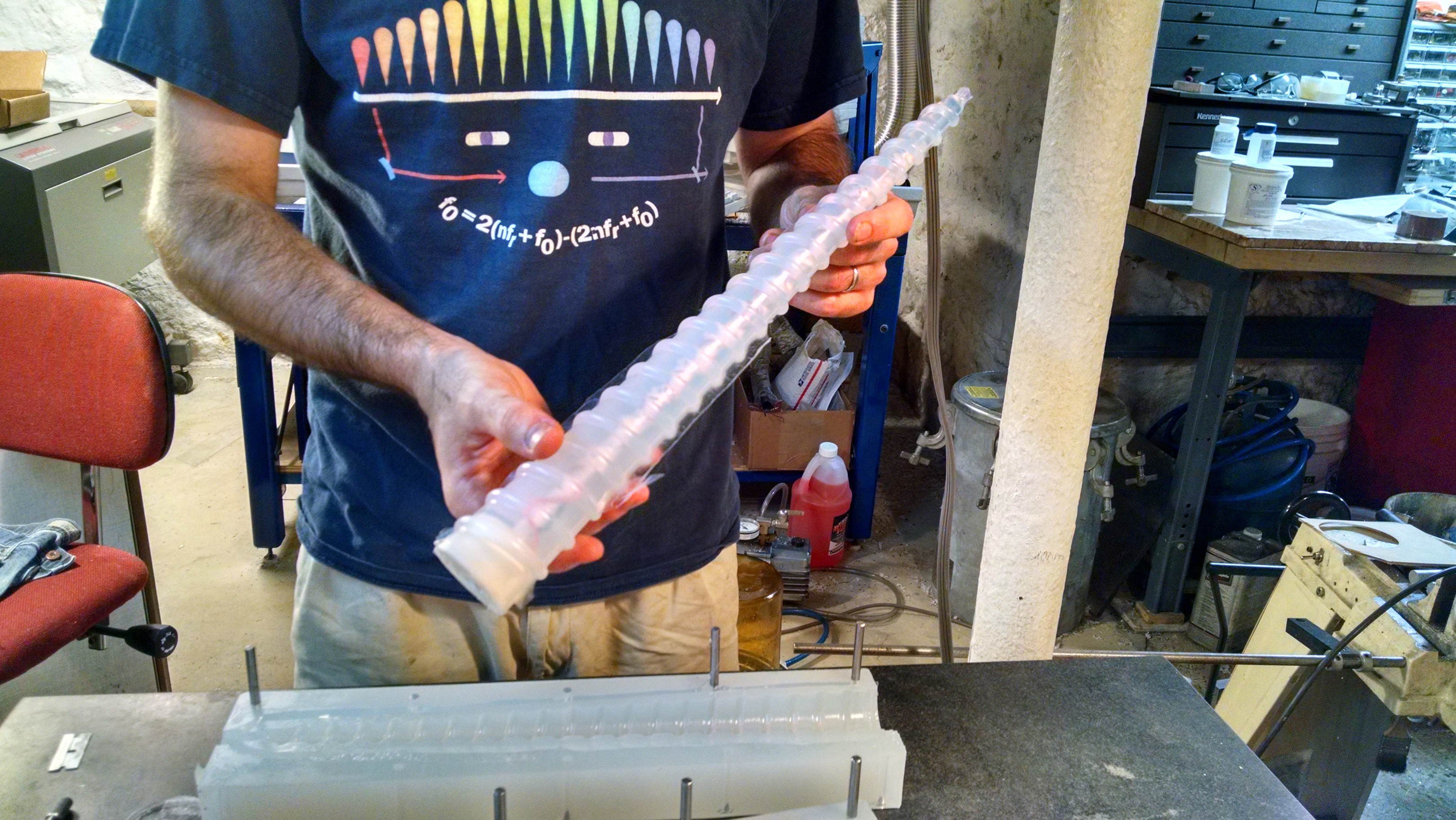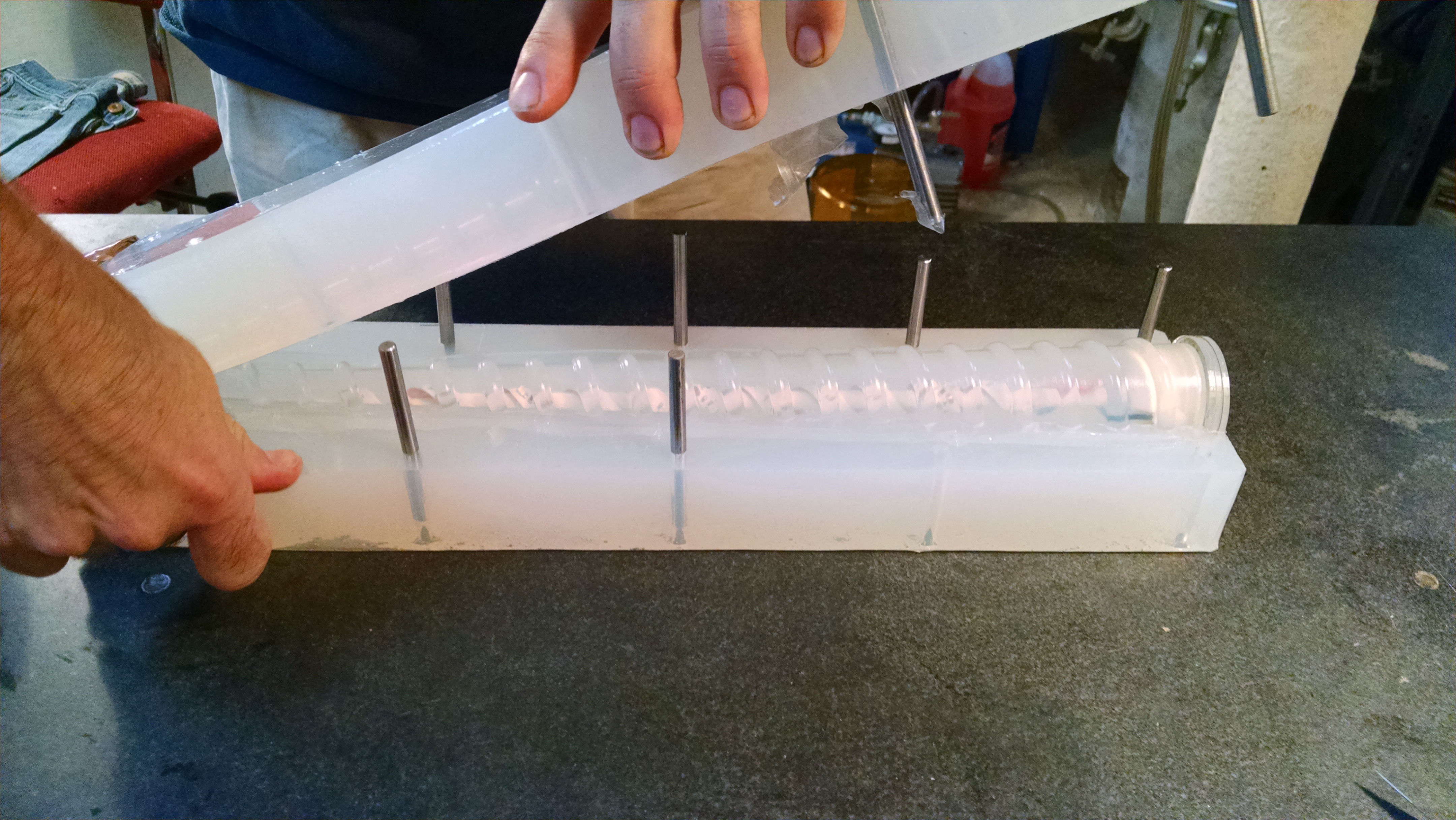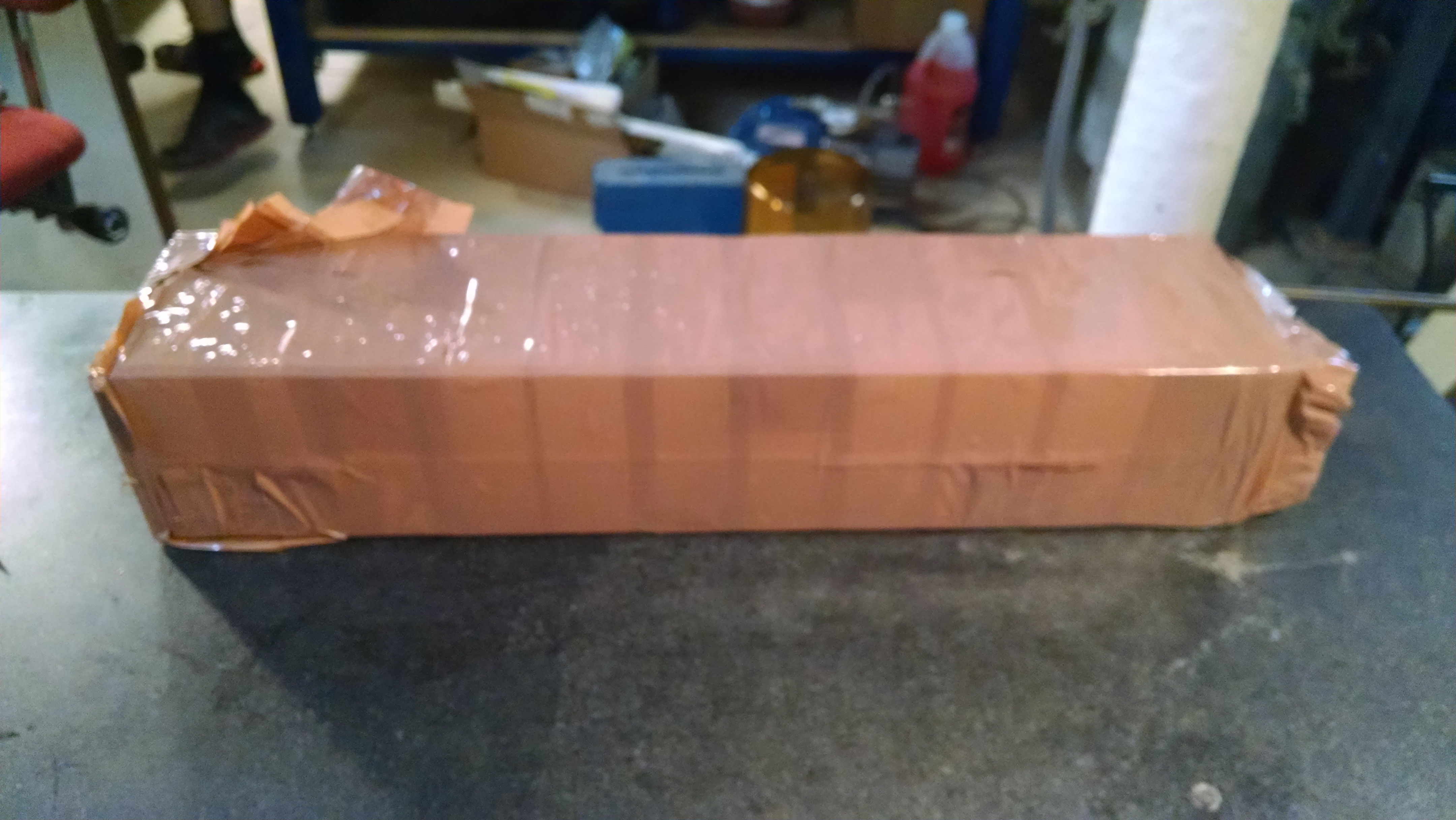-
It's a good casting!
07/31/2015 at 14:14 • 0 commentsFinally, the unicorn horn is taken out of the mold. It is a good casting, but the lights that we cast inside of it are slightly off-center.
![]()
-
Demolding
07/31/2015 at 14:13 • 0 comments12 -18 hours later, the mold is removed and we start to demold. Metal rods are used for registration so that the mold doesn't deform or move while under pressure inside of a closed tank.
![]()
-
Pressure Tank
07/31/2015 at 14:11 • 3 commentsOnce the silicone is mixed, it must be degassed. The yellow bell jar connected to the blue vacuum tank is what we use for degassing. You put your mixed silicone in the jar and crank up the vacuum. It's pretty fun to watch the air (bubbles) being pulled out of the mixed rubber. Once the rubber is mixed, it's time to pour.
We are located in NY, and it's July- so it is really hot and humid. We're not doing this in a temperature controlled environment as we should be. Water (humidity) getting into the silicone can cause it to not cure, and heat can cause the silicone to kick (cure) faster than is optimal, trapping bubbles.
The pressure tank to the right is what the mold is placed in to further draw bubbles out of the casting.
![]()
-
Setting up for casting
07/31/2015 at 14:07 • 0 commentsOnce the mold is made, we inserted the electronics, taped up the mold to prevent leaks and poured P44 from Silicones Inc (platinum base) silicone into it.
This photo is actually of the mold once removed from the pressure tank, but it looks the same going in and coming out!
![]()
-
Overview
07/31/2015 at 14:05 • 0 commentsThis project details a mold made to cast a unicorn horn about 2' long. Inside of the horn is an insert which lights LEDs.
Oliver Tanner did most of the work here. Fun fact: we met in 2000 at a prototyping company where I was a mold maker, now I am his assistant!
The mold is made from silicone P44 and the casting is made from the same material. The trouble with using the same material (or two silicones) for the mold and the casting, is that the casting can stick to the mold permanently.
This happened to me once, and it cost $500 in material and 2 days of time. The director of the movie I was working on at the time was furious!
A foolproof way to prevent this from happening is to spray the mold with mold release, or I like to use PAM cooking spray.
Moldmaking and casting
A recent project involved making one mold and 2 castings with LEDs inside
 Sophi Kravitz
Sophi Kravitz


